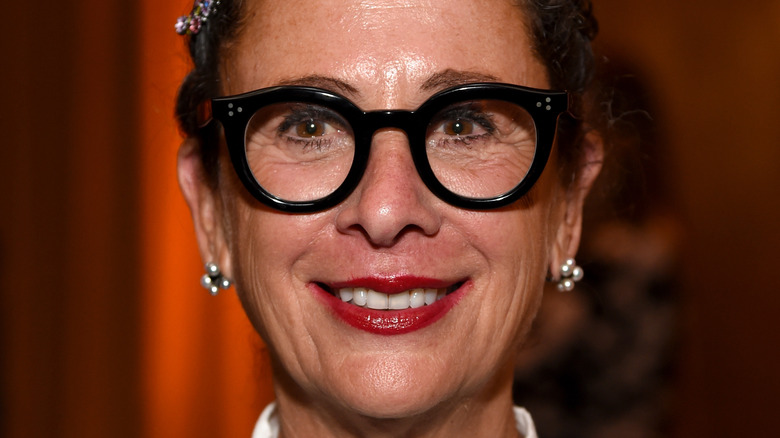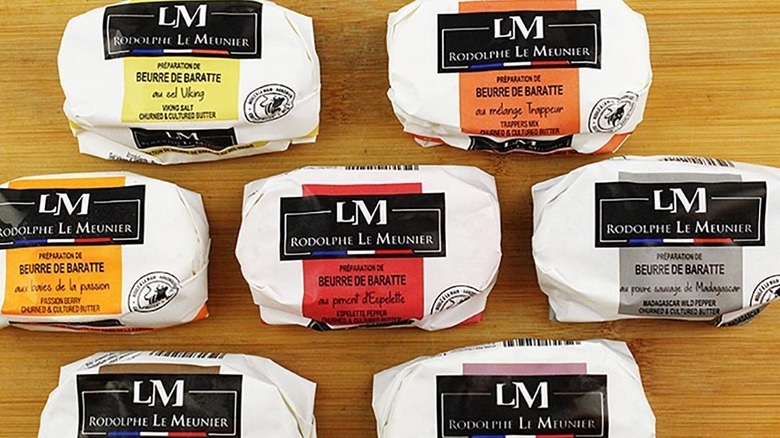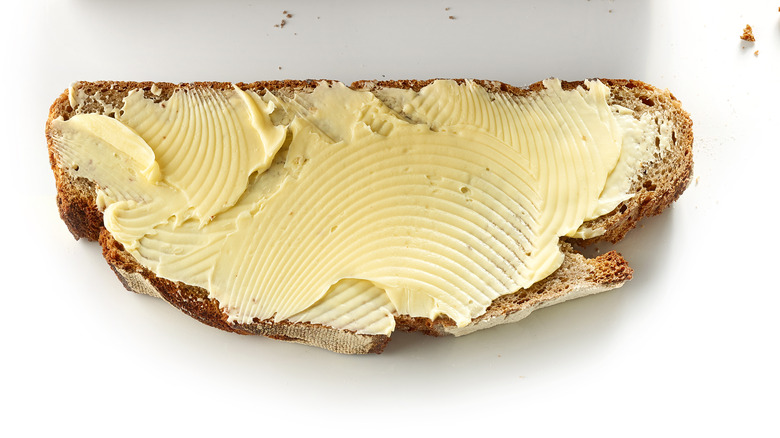The French Butter Nancy Silverton Always Keeps In Her Fridge
You can trust that someone like culinary icon Nancy Silverton, who launched her career as the head pastry chef at Spago before opening one of Los Angeles's top bakeries, knows a thing or two about butter.
Chefs, particularly those specializing in pastry, understand more than anyone that the quality of butter can make a significant difference. It's a vital element in baking, often marking the difference between a good pastry and an incredible one, as the nuanced flavors and delicate texture that it brings to a dish can elevate it to new heights. Whether it's a primary ingredient or simply spread on bread, better butter enhances the bite.
So, what kind of butter does Silverton, who is also the co-founder of La Brea Bakery, Osteria Mozza, and Chi Spacca, keep in her kitchen? Food & Wine took a look inside Silverton's fridge and discovered her favorite brand: The gold-wrapped Rodolphe Le Meunier, a traditional French-style butter.
All about Rodolphe Le Meunier butter
Rodolphe Le Meunier makes traditional Beurre de Baratte, which essentially means churned butter. As fifth-generation cheesemakers, the brand produces cultured butter that's made using the old-fashioned French technique, where pasteurized cream is churned into butter using wooden tools before being hand-molded into beautiful circular and oblong shapes.
Incorporating meticulous techniques and a dedicated passion for quality, Rodolphe Le Meunier truly embodies the adage that good things take time, and its butter is certainly no exception. Sourcing milk from grass-fed Normandy cows, Rodolphe Le Meunier claims that its traditional butter-making process creates a more premium-quality product. This age-old process of mixing and kneading the cultured cream results in a softer, thicker consistency, leading to butter that's intensely flavorful and exceptionally creamy.
Rodolphe Le Meunier butter is available in unsalted (or sweet), lightly salted with Fleur de Sel, or in flavored variants like Madagascar Wild Pepper and Passion Berry. It can typically be found at specialty grocers or cheese shops in the United States, and is also available for online purchase.
What makes French butter better?
What makes French butter so good that, as Nancy Silverton told Food & Wine, it "would kick the margarine's a**"? There are a few key differences between American butter and French butter that tend to make the European-style butter a superior product.
Firstly, the process of culturing the butter results in a richer, more intense flavor, as the fermented cream often imparts a nutty or tangy taste. Another factor contributing to its complex flavor is that most French cows are grass-fed, unlike their often grain or corn-fed American counterparts. This explains why European butter has a deeper yellow hue. Additionally, wrapping French butter in foil instead of paper helps preserve this high-quality flavor.
One major difference between American and French butter is the fat content. While American butter legally contains up to 80% butterfat, French butter requires at least 82% and can contain up to 87% fat. More butterfat contributes to a richer flavor, creamier texture, denser nutrients, and superior cooking and baking results.



